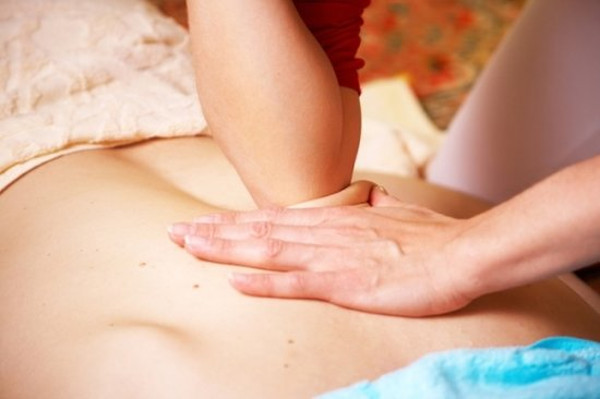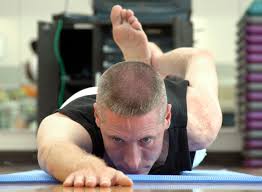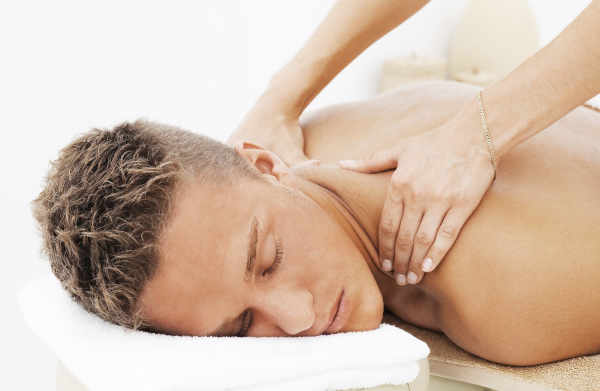In this article, we are going to guide you about the Top 8 Best Way to Relieve Lower Back Pain Stretches which is very helpful for you.
Table of Contents
Best Way to Relieve Lower Back Pain At Home – 8 Best Stretches
Lower back pain can be a debilitating and painful situation.
Luckily, staying physically active may be the most powerful and cost-efficient method to soothe or check it.
Here are 8 easy ranges to relieve more moderate back pain.

Lower back pain is common
Lower back pain influences up to 80% of all spirits at one time or another
Although its influence varies, differences in the lumbar, or lower back, building due to musculoskeletal injury are examined to be the main cause.
Your musculoskeletal policy is made up of bones, muscles, tendons, ligaments, and other connective tissues that give form, help, stability, and action to your body.
Other muscles that perform an important function in maintaining the normal shape of your spinal column are reached to be connected with lower back pain. These involve the hip flexor and hamstring muscles.
Minor lower back pain usually gets better on its own within several days or weeks. It can be recognized as chronic when it endures for more than three months.
In either state, staying physically active and constantly stretching can help decrease lower back pain or block it from returning.
The remains of this article give eight ranges for lower back pain, all of which you can do in the convenience of your own home with minimum or no facilities.
1. Knee-To-Chest
The knee-to-chest range can help increase your lower back, reducing stress and pain.
To achieve the knee-to-chest range:
- Lie on your back with your knees flexed and your feet level on the floor.
- Using both rounds, the clutch holds your right lower leg and create your fingers, or hold your wrists just below the knee.
- While keeping your left foot flat on the ground, lightly draw your right knee up to your chest till you feel a slight range in your below back.
- Take your right knee toward your chest for 30–60 seconds, making sure to unbend your legs, hips, and below back.
- Free your right knee and return to the starting situation.
- Repeat rounds 2–4 with your left leg.
- Copy three times for each leg.
To make this range more complex, concurrently make both of your knees to your chest for 15–20 seconds. Do this 3 times, distributed by 30 seconds of peace.
2. Trunk Rotation
The trunk rotation range can help reduce tension in your lower back. It also works your core muscles, including your abdominals, back muscles, and the muscles around your pelvis.
To perform the trunk rotation stretch:
- Lie on your back and bring your knees up toward your chest so your body is positioned as if you’re sitting in a chair.
- Fully spread your arms out to the sides, with your palms face-down on the ground.
- Keeping your knees collectively and hands on the floor, gently roll both bent knees over to your right faction and hold for 15–20 seconds.
- Return to the starting situation and return to step 3 on your left side, again operating for 15–20 seconds.
- copy 5–10 times on each side.
3. Cat-Cow Stretch
The cat-cow range is a useful exercise to support increased versatility and ease stress in your lower back and heart muscles.
To do the cat-cow stretch:
- Go onto your hands and knees with your knees hip-width aside. This is the starting point.
- Arch your back by drawing your belly button up to your spine, letting your head drop forward. This is the cat part of the stretch.
- Lock for 5–10 seconds. You should consider a moderate stretch in your lower back.
- Return to the opening scene.
- Promote your head up and let your pelvis fall front, curling your back down toward the floor. This is the cow part of the stretch.
- Stay for 5–10 seconds, then return to the starting situation.
- Copy the cat-cow stretch 15–20 times.
You can also do this exercise in a chair with your feet level on the floor and your palms on your knees, making it ideal for cheating in some stretches at work.
4. Pelvic Tilt
The pelvic tilt exercise is an easy yet efficient way to release tight back muscles and support their versatility.
To complete the pelvic tilt:
- Recline on your back with knees bent, feet flat, and arms by your surfaces. The natural shape of your point will lift your lower back slightly off the floor.
- Blandly arch your lower back and start your stomach out, supporting your essence.
- Support for 5–10 seconds, then relax.
- Shift your pelvis slightly up to the ceiling (your pelvis should not leave the floor) while contracting your abdominal and buttock tissues. In doing so, you should consider your lower back pushing into the floor.
- Stay for 5–10 seconds, then rest.
- Start with 10–15 copies daily, growing up to 25–30.
5. Seat Forward Bend
Strong hamstrings — the muscles placed at the back of your thighs — are thought to be a regular contributor to lower back pain and damage.
The seat forward bend increases the hamstring muscles to help tightness and loosen tension in your spine.
To perform the seat forward bend:
- Meet on the floor with your legs direct out in front of you.
- Hook a regular bath towel around the grounds of your feet at the heels.
- Lightly bend forward at your hips, bringing your stomach down to your thighs.
- Keeping your back straight, grab the towel to support you and bring your stomach closer to your legs.
- Stretch until you feel moderate tension in the back of your legs and below your back.
- Continue for 30 seconds, rest for 30 seconds, and return 3 times.
You can improve or decrease the tension of this stretch by taking the towel closer or farther from your feet.
As you become more elastic over time, you can enhance how long you take the stretch or decrease the time between stretches.
6. Flexion Rotation
The flexion turn exercise supports stretching your lower back and buttocks.
To do the flexion turn exercise:
- Lie on your right faction with both legs direct.
- Turn your left leg, securing your foot back to your right knee.
- Clasp your left knee with your right arm.
- Place your left hand after your neck.
- Gradually rotate your upper body backward by affecting your left shoulder edge to the floor. You should feel a gentle stretch in your lower back.
- Copy the rotation stretch 10 times, including each stretch for 1–3 seconds before slowly going out of the rotation.
- copy steps 1–6 on your left side.
Get Answers from a Doctor in Minutes, Anytime
Have therapeutic questions? Join a board-certified, trained doctor online or by phone. Pediatricians and other professionals are available 24/7.
7. Supported Bridge
Use a foam breaker or firm cushion to do the supported bridge. It supports decompressing your lower back through supported elevation.
To perform the supported bridge:
- Lie on your back with your knees flexed and feet flat on the floor.
- Lift your sides and place a foam roller or firm pad underneath them.
- Totally relax your body with the maintenance of the floor and the foam roller or firm cushion.
- Support for 30–60 seconds and repeat 3–5 times, resting 30–60 seconds between sets.
You can improve the stretch in your lower back by increasing one or both legs from their bent condition.
8. Belly Flops
Then to the sustained bridge exercise, the belly flop exercise uses a rolled towel to decompress your lower back through established elevation.
To make the belly flop:
- Roll up a towel or cover lengthwise and place it horizontally in front of you.
- Lie front-side down over the towel or cover so that your hip bones are pushing into it.
- Relax your body. You can turn your head to either side.
- Stay in this place for 1–2 minutes and repeat 1–3 times, resting 30–60 seconds between sets.
The Bottom Line:
Lower back pain is a severe condition that concerns many people.
Regular physical activity and stretching are established ways to help reduce lower back pain and stop it from returning.
The trunk rotation, pelvic tilt, and bolstered bridge are just a few exercises that will help soothe remaining lower back pain.


